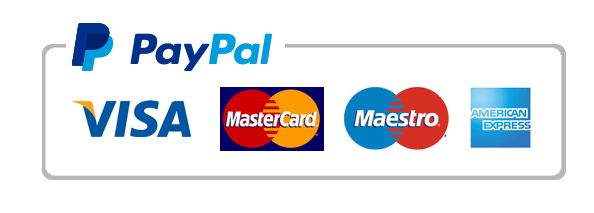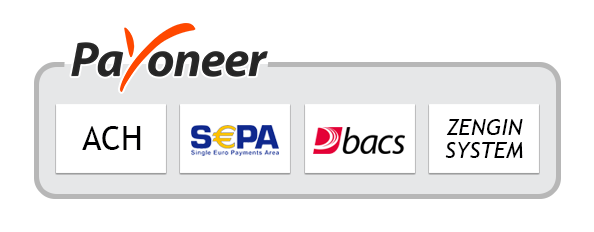Table of Contents
Introduction
New York, NY – March 03, 2025 – The Global Printing Plates for Varnish Market is experiencing significant growth, driven by increasing demand across various industries such as packaging, publishing, and commercial printing. In 2023, the market was valued at USD 434.24 million and is projected to reach approximately USD 782.38 million by 2033, growing at a compound annual growth rate (CAGR) of 6.1% during the forecast period from 2024 to 2033.
This growth is fueled by the rising popularity of high-quality printing and the need for durable varnish finishes that enhance the visual appeal and longevity of printed materials. Market demand is further boosted by advancements in printing technologies and the growing preference for eco-friendly and sustainable printing solutions. The market offers numerous expansion opportunities, particularly in emerging economies where the packaging and printing industries are rapidly evolving.
The increasing adoption of digital printing and the development of innovative varnish formulations are expected to drive market popularity. As businesses continue to prioritize branding and aesthetic quality, the demand for printing plates for varnish is set to rise, creating a favorable environment for market players to explore new growth avenues and expand their market presence.

Key Takeaways
- The global printing plates for varnish market was valued at USD 434.24 Million in 2023.
- The global printing plates for varnish market is projected to reach USD 782.38 Million by 2033.
- Among printing methods, offset printing method held the majority of the revenue share at 47.6%.
- Based on plate materials, plastic accounted for the largest market share with 76.3%.
- Among finishes, gloss varnish accounted for the majority of the printing plates for the varnish market share with 63.3%.
- Among the varnish types, UV Curable accounted for the majority of the printing plates for varnish market share with 47.6%.
- Among applications, UV Curable accounted for the majority of the printing plates for varnish market share with 84.9%.
- Based on end-users, packaging dominated the market with a share of 54.1%.
Report Scope
| Market Value (2024) | USD 434.24 Million |
| Forecast Revenue (2034) | USD 782.38 Million |
| CAGR (2025-2034) | 6.1% |
| Segments Covered | By Printing Method (Offset, Flexographic, and Others), By Plate Material (Metal, and Plastic), By Finish (Gloss Varnish, and Matte Varnish) By Varnish Type (UV Curable, Water-based, EB-based, and Solvent-based) By Application (Spot Varnish, and Overprint Varnish), By End-Use (Packaging, Commercial Print, Labels and Stickers) |
| Competitive Landscape | FUJIFILM Holdings America Corporation, DuPont de Nemours, Inc., Toray Industries, Inc., Trelleborg, Matthews International Corporation, Eastman Kodak Company, MacDermid, Inc., Presstek, Asahi Photoproducts, Kliše-Kop, XSYS Print Solutions, and BIRKAN |
➤ Directly purchase a copy of the report – https://market.us/purchase-report/?report_id=127207
Emerging Trends
- Sustainability Focus: Companies are increasingly adopting sustainable practices, creating eco-friendly printing plates that reduce environmental impact. Innovations include biodegradable materials and energy-efficient production processes, appealing to environmentally conscious consumers and businesses.
- Digital Integration: Digital technologies are transforming the printing plates market, with advancements in digital printing plates enhancing precision and speed. This trend allows for quicker turnaround times and lower production costs, making high-quality varnishing more accessible.
- Customization and Personalization: There’s a growing demand for customized and personalized printing options. Printing plates are being designed to cater to bespoke customer requirements, from unique textures to intricate designs, driving market growth through differentiated products.
- Regulatory Compliance: As regulations around chemical use and emissions tighten globally, the industry is innovating with new, compliant materials for varnish applications. This trend ensures products meet current standards while maintaining high-quality outputs.
Use Cases
- Packaging Industry: Printing plates for varnish are extensively used in packaging to add a glossy, protective finish to boxes, labels, and cartons. This not only enhances the visual appeal of products but also provides a moisture-resistant barrier that helps extend shelf life.
- Publishing Sector: In the publishing industry, varnish plates are employed to produce vibrant and durable covers for books and magazines. The varnish adds a layer of shine and protection, making publications more attractive and resistant to wear and tear over time.
- Marketing Materials: Businesses use varnished printing plates to produce high-quality promotional materials, such as brochures, flyers, and business cards. The varnish enhances colors and durability, making the materials stand out and last longer in the hands of potential customers.
- Automotive Industry: Varnish printing plates are used in the automotive sector to create detailed and durable decals and stickers for vehicles. These varnished decorations withstand environmental elements like sun and rain, maintaining their aesthetic appeal for longer.
Major Challenges
- Environmental Concerns: The use of chemical varnishes raises environmental issues, as some compounds used can be harmful if not managed properly. This leads to stringent regulations and a need for safer, more sustainable solutions.
- Technological Advancements: Keeping up with rapid technological advancements in printing can be costly. Printing companies need to continually invest in newer, more efficient technologies to stay competitive, which can be a significant financial burden.
- High Initial Costs: The initial setup cost for high-quality printing plates and associated varnishing equipment is quite high. This can be a barrier for smaller players, limiting their ability to enter the market.
- Compliance with Regulations: Adhering to international and local environmental regulations can be challenging. Manufacturers must ensure that their products comply with evolving standards that aim to reduce environmental impact, requiring ongoing research and adaptation.
- Market Competition: Intense competition from both established players and new entrants can pressure profit margins and market share. Companies must innovate and improve their offerings to differentiate themselves in a crowded market.
Market Growth Opportunities
- Eco-Friendly Innovations: There is a growing demand for eco-friendly printing solutions. Developing sustainable varnish materials and processes can attract environmentally conscious clients and open up new market segments.
- Expansion in Emerging Markets: Increasing urbanization and industrialization in emerging economies present significant opportunities for market expansion. Companies can capitalize on growing packaging and advertising needs in these regions.
- Technological Integration: Integrating advanced technologies, such as digital and 3D printing, with traditional varnish techniques can enhance efficiency and product quality, appealing to a broader customer base.
- Diversification of Applications: Exploring new applications in sectors such as electronics, automotive, and textiles can diversify revenue streams. Varnishing can add value to products beyond traditional markets like publishing and packaging.
- Customization Services: Offering bespoke varnishing solutions tailored to specific customer requirements can set companies apart. Customization is increasingly important in industries like luxury goods and specialized retail packaging, where brand distinction is crucial.
Recent Developments
1. FUJIFILM Holdings America Corporation
- Innovation: In 2023, FUJIFILM launched advanced SUPERIA ZX printing plates, which offer improved durability and varnish application capabilities. These plates are designed to enhance print quality and reduce waste, aligning with sustainability goals.
- Partnership: FUJIFILM partnered with Heidelberg in 2022 to integrate its printing plate technologies with Heidelberg’s printing presses, improving varnish application efficiency.
- Contribution: These innovations and partnerships have strengthened FUJIFILM’s position in the varnish printing plate market by offering eco-friendly and high-performance solutions.
2. DuPont de Nemours, Inc
- Innovation: In 2023, DuPont introduced CYREL EASY varnish plates, which provide faster processing times and better ink transfer for varnish applications. These plates are designed for high-speed printing and reduce energy consumption.
- Acquisition: DuPont acquired Rocket Graphics in 2022, a company specializing in flexographic printing plates, to expand its portfolio in the packaging and varnish printing sector.
- Contribution: These developments have enhanced DuPont’s ability to cater to the growing demand for efficient and sustainable varnish printing solutions.
3. TORAY INDUSTRIES, INC
- Innovation: In 2022, Toray developed TORAYPRECISE water-washable printing plates, which reduce chemical usage and improve varnish application precision. These plates are gaining popularity in the packaging industry.
- Partnership: Toray collaborated with Koenig & Bauer in 2023 to develop hybrid printing solutions that combine digital and traditional varnish printing technologies.
- Contribution: Toray’s innovations and partnerships have advanced eco-friendly and high-precision varnish printing technologies.
4. Trelleborg
- Innovation: In 2023, Trelleborg launched Trelleborg Printing Plates Pro with enhanced surface technology for superior varnish adhesion and durability. These plates are designed for high-end packaging applications.
- Partnership: Trelleborg partnered with HP Indigo in 2022 to develop hybrid printing solutions for varnish applications in digital printing.
- Contribution: These initiatives have positioned Trelleborg as a key player in the high-performance varnish printing plate market.
5. Matthews International Corporation
- Innovation: In 2022, Matthews introduced NOVOFLEX varnish plates with improved ink transfer and faster curing times, catering to the demand for high-speed printing.
- Acquisition: Matthews acquired Peregrine in 2023, a company specializing in advanced printing technologies, to expand its capabilities in varnish and specialty printing.
- Contribution: These developments have strengthened Matthews’ offerings in the varnish printing sector, particularly for packaging and labeling applications.
Conclusion
The Printing Plates for Varnish Market is poised for significant growth, driven by advancements in technology, increasing demand for eco-friendly products, and the expansion into emerging markets. As companies continue to innovate and adapt to changing consumer preferences and regulatory requirements, the opportunities for diversification and technological integration appear promising. Embracing these trends will be key for businesses looking to capitalize on new market segments and enhance their competitive edge. The future of printing plates for varnish looks bright, with sustainability and customization at the forefront of driving market dynamics and success.
Discuss Your Needs With Our Analyst
Please share your requirements with more details so our analyst can check if they can solve your problem(s)





